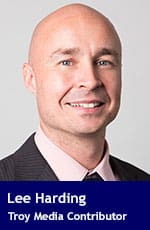Psychologist John Money’s radical gender theory promised a new understanding of identity but has only left a legacy of pain

For interview requests, click here
The idea that gender is disconnected from sex was popularized by psychologist John Money. Perverted minds produce perverted ideas. Unfortunately, Money’s legacy of destruction continues.
The idea that sex drives come out of nowhere and have nothing to do with biology should be dismissed out of hand, given the countless generations of procreated human and even animal species. Yet, in 1961, Money claimed that “erotic outlook and orientation is an autonomous psychological phenomenon independent of genes and hormones.”
In simple terms, John Money believed that a person’s sexual feelings and interests develop on their own, without being directly controlled by their biology – like their genes or hormones. Instead, he thought these feelings and attractions were shaped more by psychological factors than by physical ones.
Money later said, “Like hermaphrodites, all the human race follow the same pattern, namely, of psychological undifferentiation at birth.”
Again, to translate, Money is suggesting that people are not born with a fixed sense of being male or female psychologically. Instead, a person’s understanding of their own gender identity – whether they feel male, female, or something else – gradually forms as they grow and develop
In other words, no one is born heterosexual, and there are no biology-based differences in how men and women act.
By 1973, even Money had to acknowledge a wide body of research that showed “fetal gonadal hormones … have an influence on neural pathways in the brain.” Still, he emphasized nurture over nature.
Money had a chance to test his theories after the birth of Winnipeg twin brothers Bruce and Ron Reimer, born in 1965. A botched circumcision left Bruce’s penis almost severed, seemingly damaged beyond function. Their parents saw Money on TV in 1967 and went to his gender clinic at Johns Hopkins University.
The clinic was the first of its kind and specialized in cross-sex surgeries. Money convinced the parents to have Bruce’s penis and testes removed, rename him Brenda, and raise him as a girl. Both twins visited Money annually, and Money used their example on a lecture circuit to insist that gender roles were instilled and not innate.
This was complete fiction, but the truth didn’t come out until it was exposed by psychologist H. Keith Sigmundson and biologist Milton Diamond in a medical journal in 1997.
The twins’ mother, Janet, recalled how Brenda hated dresses, sewing, and dolls. Instead, the child preferred to play soldier, dress in men’s clothes, tinker with tools and gadgets, and even stand up to pee. When Brenda told doctors “she” felt she wasn’t a girl, they discounted it.
It turns out Money made the twins inspect each other’s genitals. His therapy involved forcing the twins into a simulation of sexual positions and motions, something Money justified as healthy childhood sexual exploration. Money photographed this while as many as six colleagues looked on. If either child resisted orders, the doctor responded with anger and verbal abuse.
This disturbing account is not entirely surprising. Money participated in nudism and group sex as part of the Society for the Scientific Study of Sexuality. He advocated open marriages and even compiled a pornographic presentation for students at Johns Hopkins Medical School called “Pornography in the Home.”
In his 1975 book Sexual Signatures, Money wrote, “[E]xplicit sexual pictures can and should be used as part of a child’s sex education … [to] reinforce his or her own gender identity/role.”
By the age of 13, Brenda so dreaded the annual visit to Money that she threatened suicide. Her parents sent her anyway. Consultants at the Baltimore clinic recruited male-to-female transsexuals to convince Brenda it was better to be female and have a vagina. This “advice” so disturbed Brenda that she ran away from the hospital and hid on the roof of a nearby building.
In 1980, Brenda begged her father for the truth, and he finally admitted her birth as a male. She transitioned back to male and took the name David. Next, endocrinologists, psychologists, and surgeons did their best to reconstruct Brenda’s, and now David’s, manliness.
David Reimer killed himself in 2004.
Money stopped talking about the twins on the lecture circuit but did not confess how woefully wrong he was.
In 1979, Dr. Paul McHugh, chief psychiatrist at Johns Hopkins Hospital, investigated whether their sex reassignment surgeries helped the psycho-social problems of patients. The answer was so clearly “no” that the clinic stopped doing them.
In 2004, McHugh recalled that those operated on “had much the same problems with relationships, work, and emotions as before.” He added, “I concluded that Hopkins was fundamentally co-operating with a mental illness. We psychiatrists, I thought, would do better to concentrate on trying to fix their minds and not their genitalia.”
When the gender clinic was shut down in 1980, Money started another clinic at Johns Hopkins for gender “paraphilias,” a polite term for deviancies. That year, he told Time magazine, “A childhood sexual experience, such as being the partner of a relative or of an older person, need not necessarily affect the child adversely.”
In 1991, Money told Paidika, a pro-pedophilia journal in the Netherlands, that a mutually acceptable sexual relationship between a 10-year-old boy and a man in his 30s was not “pathological in any way.” He said efforts to keep children from sexual activity, including sexual consent laws, was “really a diabolically clever ploy to establish anti-sexualism on a big scale.”
Money died in 2006. Too bad his warped ideas didn’t die with him.
Lee Harding is a Research Fellow for the Frontier Centre for Public Policy.
Explore more on Gender dysphoria, Gender politics, Transgender
The views, opinions, and positions expressed by our columnists and contributors are solely their own and do not necessarily reflect those of our publication.
© Troy Media
Troy Media is committed to empowering Canadian community news outlets by providing independent, insightful analysis and commentary. Our mission is to support local media in building an informed and engaged public by delivering reliable content that strengthens community connections, enriches national conversations, and helps Canadians learn from and understand each other better.


